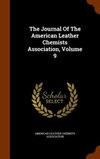皮革染色用生物着色剂:天然着色剂的生态评价
IF 0.5
4区 工程技术
Q4 CHEMISTRY, APPLIED
Journal of The American Leather Chemists Association
Pub Date : 2021-09-07
DOI:10.34314/jalca.v116i9.4397
引用次数: 1
摘要
由于生物着色剂对环境的限制,皮革工业中生物着色剂的开发受到广泛的关注。此外,在皮革加工中使用合成染料,由于其化学结构复杂,对管道处理要求较高。为此,尝试开发茜草根染料用于皮革染色。研究了不同预处理方案对茜草着色剂提取、化学表征(包括UV-Vis、IR、粒度、zeta电位值和热研究)和最佳皮革染色操作条件的影响。结果表明,溶出液pH为5、100℃,提取时间为60 min。因此,所获得的染料特性表明,最大吸收峰位于460 nm处,平均粒径为166 nm。它还显示负的zeta电位值为-5.31,这表明染色应用。在皮革pH为5.5、染料浓度为10%、染色时间为4 h时,皮革染色效果最佳。在最佳染色参数下,织物具有良好的牢度、排汗性和感官性能,且不影响织物的物理特性。本研究的新颖性将引导皮革生产中生态染色方法的发展。此外,该研究还揭示了生态染料在实现可持续过程中的新应用。本文章由计算机程序翻译,如有差异,请以英文原文为准。
Biocolorant for Leather Dyeing Applications: An Eco-benign Evaluation of Natural Coloring Agent
Exploration of biocolorant in leather industry is explored widely owing to its environmental limitation. Besides, employing synthetic dyes in leather process requires high end of pipe treatment due to their complex chemical structure. Therefore, an attempt has been made on exploiting madder root dye (Rubia cordifolia L.) for leather dyeing application. The effect of varying pretreatment regimen on madder colorant extraction, chemical characterizations (including UV-Vis, IR, particle size, zeta potential value, and thermal studies) and optimum operating leather dyeing conditions are studied. The results revealed dissolving medium pH 5, 100oC, and 60 min duration of extraction is optimum. Thus, obtained dye characteristics showed maximum absorption peak at 460 nm, with an average particle size of 166 nm. It also shows a negative zeta potential value of -5.31 which is indicative for dyeing application. The optimum leather dyeing is found at leather pH 5.5, 10% dye concentration and 4 h duration. At optimum dyeing parameters it shows good fastness, perspiration, organoleptic properties without affecting the physical characteristic. Novelty of the present research would lead to develop eco-dyeing method in leather manufacture. Moreover, the study unravels a new application of eco-benign dye to achieve sustainable process.
求助全文
通过发布文献求助,成功后即可免费获取论文全文。
去求助
来源期刊

Journal of The American Leather Chemists Association
工程技术-材料科学:纺织
CiteScore
1.30
自引率
33.30%
发文量
29
审稿时长
3 months
期刊介绍:
The Journal of the American Leather Chemists Association publishes manuscripts on all aspects of leather science, engineering, technology, and economics, and will consider related subjects that address concerns of the industry. Examples: hide/skin quality or utilization, leather production methods/equipment, tanning materials/leather chemicals, new and improved leathers, collagen studies, leather by-products, impacts of changes in leather products industries, process efficiency, sustainability, regulatory, safety, environmental, tannery waste management and industry economics.
 求助内容:
求助内容: 应助结果提醒方式:
应助结果提醒方式:


